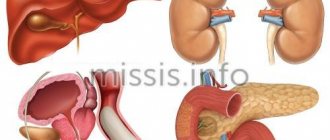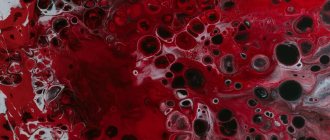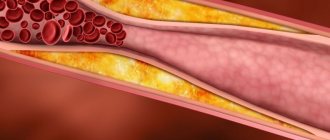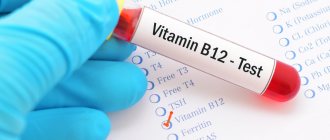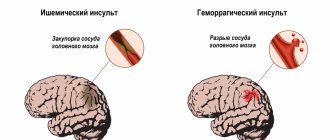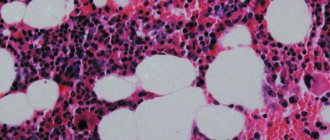general characteristics
Creatinine is the end product of creatine breakdown, which plays an important role in the energy metabolism of muscle and other tissues. Its formation directly depends on the state of muscle mass. Creatinine is excreted by the kidneys (it is excreted only by the glomeruli and, unlike urea, is not reabsorbed in the renal tubules), therefore a decrease in creatinine excretion in the urine and an increase in creatinine in the blood is observed in patients with kidney damage. Daily urinary excretion of creatinine depends on gender, age, and total muscle mass. In combination with serum creatinine, it is used to calculate creatinine clearance and assess renal function.
Creatinine in Biochemical Analysis (CREA)
Creatinine is the result of the metabolism of complex energy-carrying molecules. These molecules are formed in the liver and are carried to all cells, delivering the energy necessary for life. Energy is released after the rupture of special chemical bonds, resulting in the formation of breakdown products that return to the blood. One part of them is reused in the synthesis of new energy carriers, and the other part is utilized by the excretory system as compounds foreign to the body. Among them is creatinine. It is always present in the blood, which indicates normal metabolism.
Energy metabolism is most active in muscle tissue (especially during physical activity), nerve cells (during mental stress) and in the gastrointestinal tract (after eating). The indicator is different for opposite sexes, since it is believed that a man has more developed muscles, harder work, and more active metabolic processes.
Norm:
- For men – 74-110 µmol/l;
- For women – 44-80;
- Children under 14 years old – 27-62;
- Children under 12 months – 18-35.
If excretion is not impaired, all “extra” creatinine is successfully utilized in the urine. Otherwise, when the kidneys cannot cope with the load and are unable to filter it out, the concentration increases. Pathology of the urinary system
is the most common cause of increased CREA.
However, excess of the norm also occurs when its formation is enhanced, despite the intact excretory function in the case of:
- Muscle damage (injuries, burns, inflammation);
- Intoxication;
- Metabolic disorders (thyrotoxicosis, diabetes mellitus);
- Massive blood loss;
- Autoimmune processes;
- Hepato-biliary diseases.
The decrease is somewhat less common and is typical for situations not associated with any pathology:
- Reducing protein in the diet (diet, fasting);
- Dystrophy, atrophy, cachexia;
- The first three months of pregnancy.
A change in normal values is not always a sign of the presence of a disease. For example, this indicator may increase after heavy physical or intense mental work, a rich meat diet, or drinking large amounts of alcohol. To exclude such false positive results:
- Determined strictly on an empty stomach;
- Reduce meat consumption the day before;
- Avoid alcohol and intense work during the day.
Creatinine level testing is mandatory
if any symptoms associated with kidney dysfunction (swelling, discomfort in the lower back, changes in urine), liver (unpleasant sensations in the right hypochondrium, bitterness in the mouth), unmotivated muscle pain occur. If you have any doubts, you should consult a doctor who can clearly determine the indications for the CREA test.
Patient preparation rules
The morning portion of urine is placed in the toilet. Collect urine for a day in a clean container, including the morning portion of the next day. After the last urine collection, mix all collected urine, determine its volume and record it. Pour 35-40 ml and deliver to the nearest branch of ML “DILA” within 2 hours. Keep the container with biomaterial in a cool place, protected from light, during collection. Maybe:
To collect daily urine, the patient is asked to purchase a container with a volume of 2.0 liters at the price price (the cost of the container is not included in the cost of the study).
You can add this study to your cart on this page
Urine collection instructions
The nurse will give you the necessary supplies:
- plastic container for collecting urine; manual urinal (issued to men);
- a cup for collecting urine (issued to women);
- if you are receiving hospital treatment, you may be given a bedpan;
Immediately before the start of daily urine collection
You must begin counting the urine collection period with an empty bladder. Immediately before the start of the daily collection, urinate in the toilet and flush. Then write down the date and time. This moment will be the beginning of the urine collection period. The collection will end in 24 hours.
Collection start date: ___________________ Collection start time: _________________
During the 24-hour urine collection period
- Collect all urine. Urinate only into a urine bag, urine collection cup, or bedpan. To use a urine collection cup, place it under the toilet seat and urinate into it.
- If you are in hospital, seek help if necessary.
Interpretation:
- Often called “hyperfiltration”, it is detected in the following conditions: physical activity, acromegaly, gigantism, diabetes mellitus (before clinical manifestations of diabetic nephropathy), infections, hypothyroidism, meat food, increased cardiac output, pregnancy, burns, carbon monoxide poisoning, increased metabolism, anemia.
- Indicates a decrease in glomerular filtration rate, detected in the following conditions: hyperthyroidism, anemia, paralysis, muscular dystrophy, diseases with a decrease in muscle mass (for example, neurogenic atrophy, polymyositis, etc.), inflammatory and metabolic diseases.
Sample result (PDF)
Creatinine
Creatinine is a product of the non-enzymatic breakdown of creatine and creatine phosphate, which is formed in muscles. It is excreted from the body by the kidneys.
Research method
Kinetic method (Jaffe method).
Units
μmol/L (micromoles per liter).
What biomaterial can be used for research?
Venous, capillary blood.
How to properly prepare for research?
- Do not eat for 12 hours before the test.
- 30 minutes before the analysis, eliminate physical and emotional stress.
- Do not smoke for 30 minutes before donating blood.
General information about the study
Creatinine is a residual product produced in muscles when a substance called creatine is broken down. Creatine is part of a cycle that provides the body with energy to contract muscles. After 7 seconds of intense physical activity, creatine phosphate is converted to creatine, which then turns into creatinine, which is filtered in the kidneys and excreted in the urine. Creatine and creatinine are stably produced by our body in constant quantities. Almost all creatinine is excreted by the kidneys, so its concentration in the blood is a good indicator of kidney function. The amount of creatinine produced depends on total body weight and, in particular, muscle mass. Therefore, for example, creatinine levels in men will be significantly higher than in women and children.
What is the research used for?
- To assess renal function.
- To assess the function of major organs and systems.
- To assess renal dysfunction and the effectiveness of its treatment.
- If the level of creatinine in the blood and urine is known, the creatinine clearance (Rehberg test) can be calculated - this test shows how effectively the kidneys filter small molecules such as creatinine from the blood.
- To calculate the glomerular filtration rate to confirm kidney damage.
What do the results mean?
Reference values (creatinine norm):
| Age, gender | Reference values |
| 13 – 15 years | 50 – 77 µmol/l |
| > 15 years old, male | 62 - 106 µmol/l |
| > 15 years old, female | 44 - 80 µmol/l |
Causes of increased creatinine levels
- Acute and chronic renal failure.
- Insufficiency of the cardiovascular system.
- Massive destruction of muscle tissue.
- Burns.
- Acromegaly.
- Gigantism.
- Hyperthyroidism.
- Dehydration.
- Excessive physical activity.
- Excessive consumption of meat products.
- Radiation sickness.
- Obstruction of the urinary tract.
- Taking nephrotoxic drugs.
- Glomerulonephritis.
- Bacterial kidney infection (pyelonephritis).
- Necrosis of the tubular epithelium (acute tubular necrosis).
- Prostate diseases causing obstruction of the urinary system.
Reasons for decreased creatinine levels
- Starvation.
- Overhydration.
- Amyotrophy.
Important Notes
The creatinine content is reduced in pregnant women by almost half due to an increase in blood volume (hypervolemia), increased blood flow in the kidneys and, accordingly, an increasing degree of filtration; all this leads to an increase in creatinine clearance (excretion in urine).
In older people, creatinine formation normally decreases; this must be taken into account when determining the severity of their kidney disease.
What urine test is needed for cystitis?
If cystitis is suspected, you must first undergo a general urinalysis (UCA). The results of OAM in cystitis will reveal an increased content of leukocytes, bacteria, and an increased content of erythrocytes and protein may occur.
Additionally, the attending physician may recommend conducting bacterial culture of urine to determine antibiotic sensitivity to identified pathogenic microorganisms, PCR diagnostics for sexually transmitted diseases, and a number of studies for the diagnosis of viral infections (since cystitis is not always caused by bacteria).
From instrumental studies, the doctor can refer the patient to an ultrasound of the kidneys, CT/MRI of the pelvis to exclude tumors and stones in the urinary system, kidney and prostate diseases in men.
Prevention of exacerbations of cystitis
- Regularly perform thorough toileting of the external genitalia
- Use barrier methods of contraception
- Timely treatment of gynecological and urological diseases
- Urinate immediately after intercourse
Preparing for the OAM test for cystitis
On the day before taking biomaterial, it is advisable to refrain from physical activity, drinking alcohol, and not eat vegetables and fruits (beets, carrots, citrus fruits, watermelons), red wine, and multivitamins, which can change the color of urine.
Avoid taking diuretics for 48 hours before urine collection (in consultation with your doctor).
Urine should be collected before starting antibiotic therapy.
Carry out a thorough toileting of the external genitalia under the shower with soap (it is prohibited to use hygiene products with antiseptics). For men, pull back the foreskin of the penis, wash the head well with warm water, and dry with a paper towel.
Women during menstruation should place a tampon in the vagina before collecting urine and inform the attending physician that the test was performed during menstruation.


